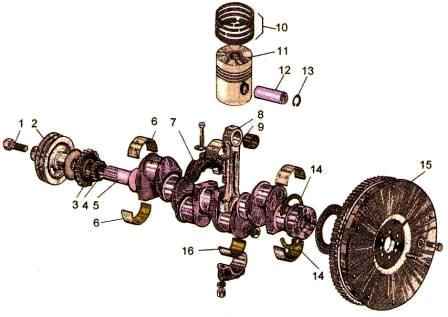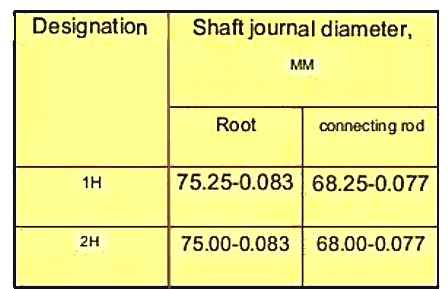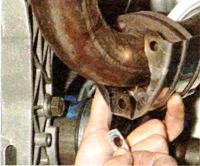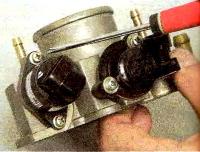Before assembly, each crankshaft must be checked on a magnetic or ultrasonic flaw detector for the absence of micro and macro cracks; as well as the compliance of the selected set of main bearing shells with the size of the main journals

Mechanical damage (risks, dents, nicks, etc.) on the crankshaft journals and main bearing shells is not allowed.
Main journals, liners and bearing seats should be wiped with a napkin and blown with compressed air.
The main bearing caps must fit snugly into the housings of the block.
Rearrangement and inversion of main bearing caps are not allowed.
Disassembly of main bearing shells is not allowed.
The liners must be installed in the appropriate seats in the cylinder block.
Main journals and liners must be lubricated with engine oil before laying the crankshaft.
Thrust half rings installed on the walls of the bed of the fifth main bearing and the bearing cover must be selected so that the longitudinal play of the crankshaft after tightening the main bearing bolts is 0.14-0.37 mm.
The crackers of the valve mechanism should protrude 0.5-2.0 mm above the plane of the washer;
Pistons, connecting rods and piston pins of the same weight group must be selected for one diesel engine, the weight of connecting rods complete with pistons should not exceed 30 g.
Main and connecting rod journals and crankshaft bearing shells are manufactured in two nominal sizes.
Nominal sizes of crankshaft journals

Nominal dimensions of crankshaft bearing shells

Crankshafts, the connecting rod and main journals of which are made according to the size of the second denomination, have an additional designation on the first cheek:
- 2K - root necks of the second denomination;
- 2Ш - connecting rod journals of the second denomination;
- 2КШ - connecting rod and main journals of the second denomination.
Repair dimensions of the crankshaft journals

When checking the tightening of the bolts of the main bearing caps for tightening, the torque value should not exceed 240 Nm.
The torque of the main bearing bolts should be 200-220 Nm.
In this case, the crankshaft should rotate smoothly, without jamming, with a torque of no more than 3 Nm.











